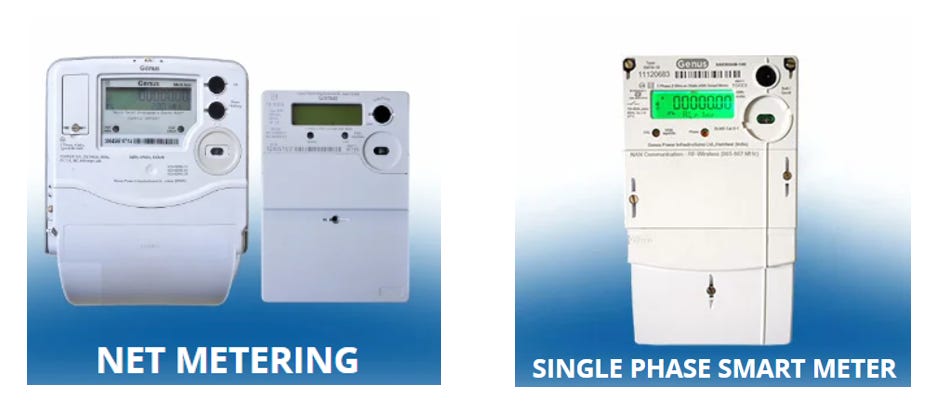Learning This Week: Smart Grids & Smart Meters
Every week I learn something interesting about a topic.
If you have not signed up for the free newsletter yet, consider doing so now at https://intelsense.substack.com
With everything becoming “smart”, it is time to look at the energy network. Smart Grids are now becoming common. It uses the latest digital technology in the grid infrastructure to increase efficiency. Traditionally power grids were one way - that is power generating stations used to produce electricity and then distribute it to consumers. The system was largely passive, with little real-time information about usage and demand. A smart grid enables two-way communication of demand and supply.
The main components of a smart grid are:
Smart Meters
Smart meters measure real-time energy consumption at the consumer’s end, providing detailed information on consumption patterns to both the consumer and the energy provider. In India, the biggest thrust from a consumer-facing standpoint is in this space.
Smart meters have been deployed in various states across India, with significant installations in:
Bihar: Over 100,000 smart meters have been installed in the state.
Uttar Pradesh: The state has the highest number of installed smart meters, with 1,154,358 meters as of February 2022.
Haryana: The state has a significant number of installed smart meters, with 560,049 meters as of February 2022.
These deployments are part of the larger smart meter rollout initiatives, including the Smart Meter National Programme (SMNP) and the Revamped Distribution Sector Scheme (RDSS), which aim to install 250 million smart meters across India by 2026.
Fig: Smart Meters from Genus Power
Sensors and Automation Devices
These are installed throughout the grid to monitor voltage, current, and load capacity (among other metrics). They can automatically adjust parameters to prevent overloads and prolonged, large-scale blackouts.
Communication Networks
The backbone of any smart grid, communication networks facilitate the transmission of data between various components, including sensors, automated devices and control centres. Transmission systems can be wired or wireless and use a range of protocols and communication technologies (e.g., Wi-Fi, 4G/5G etc).
Software and Analytics
Smart grids generate massive amounts of data. To manage, analyze and interpret this data, utilities rely on advanced software and analytics tools. This software, and the insights it provides, can help providers predict demand patterns, identify potential issues and optimize the distribution network.
DISCLAIMER:
Investments in the securities market are subject to market risks. Read all the related documents carefully before investing.
SEBI Registered Research Analyst - Cupressus Enterprises Pvt Ltd - INH000013828.
Registration granted by SEBI and certification from NISM in no way guarantee the performance of the intermediary or provide any assurance of returns to investors.




